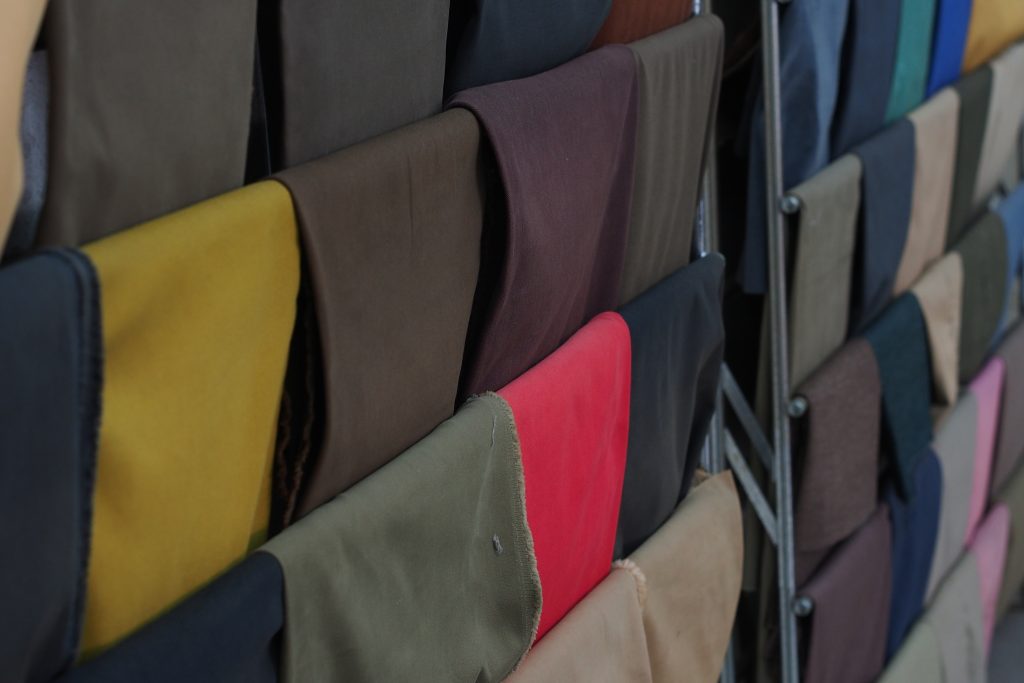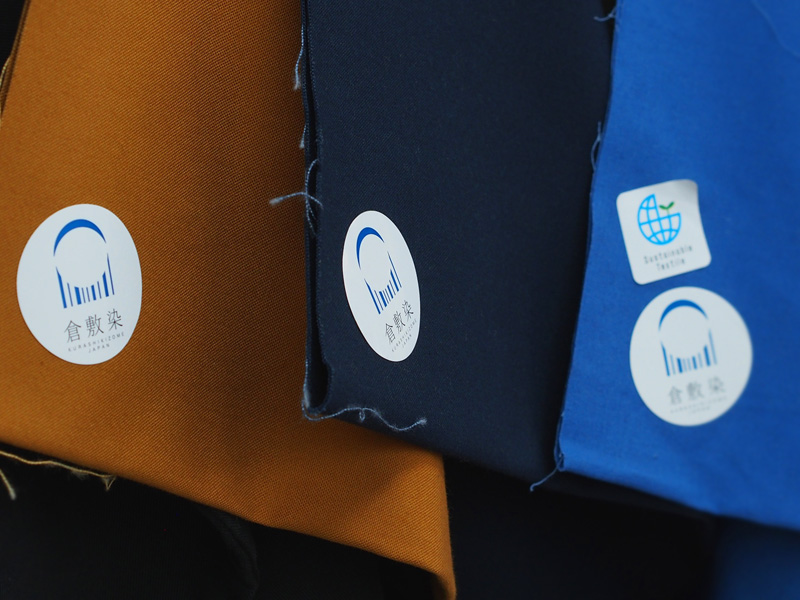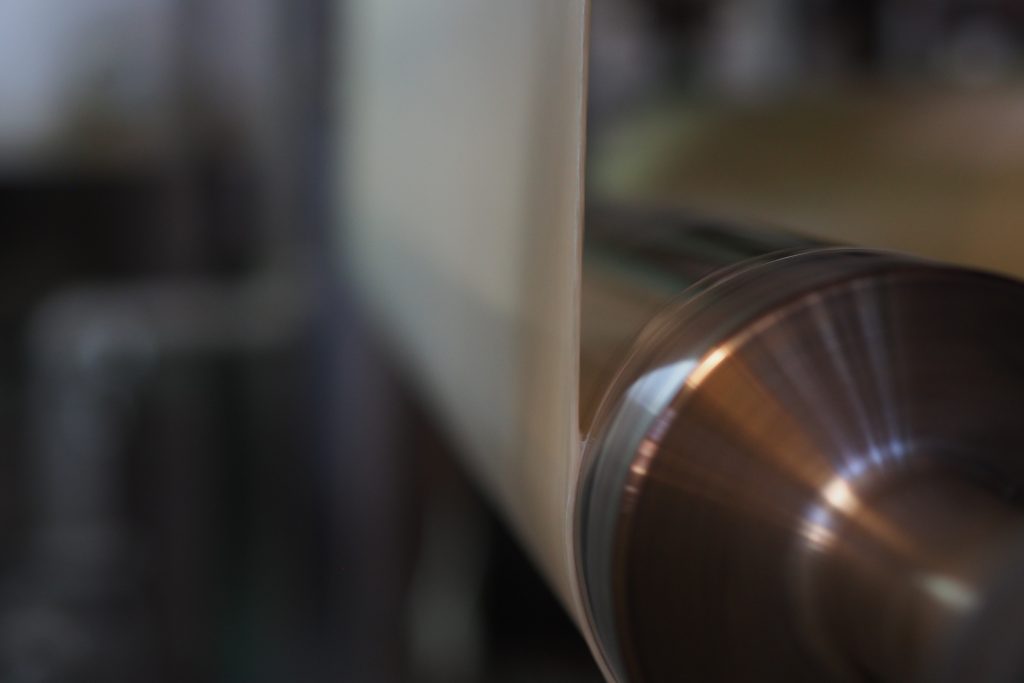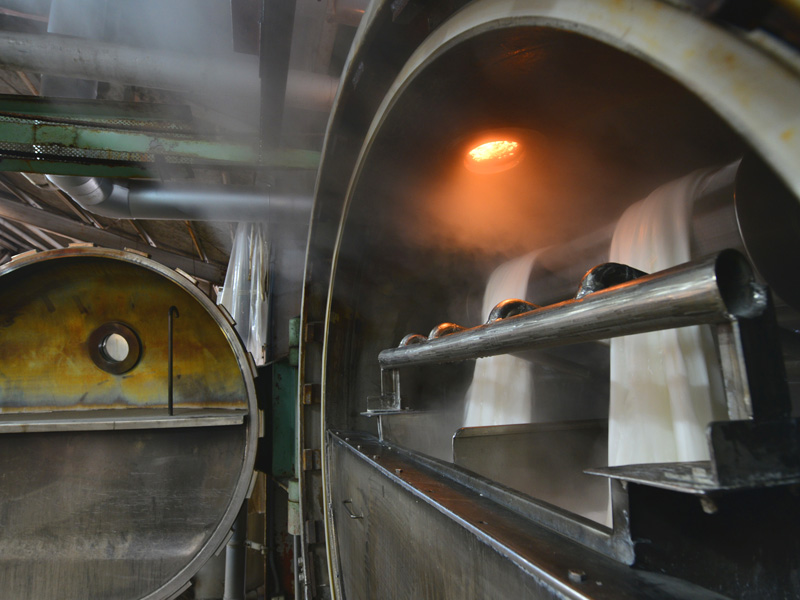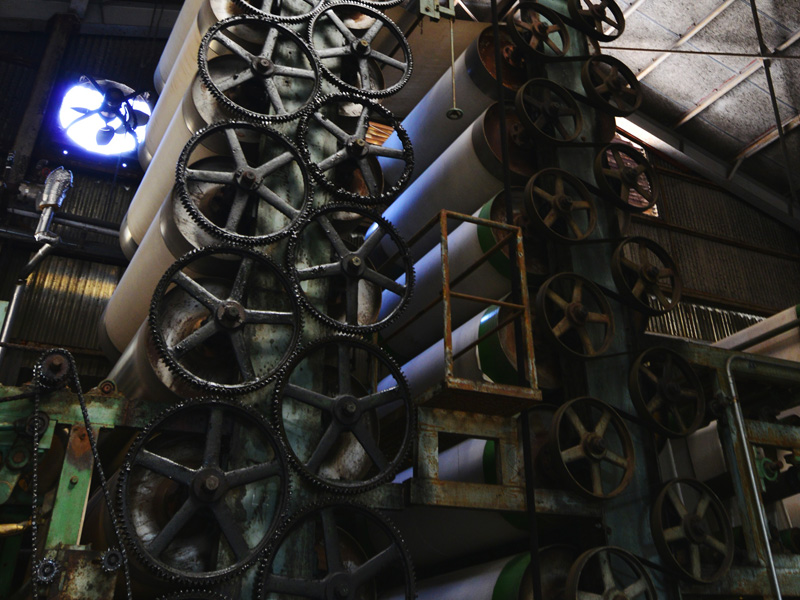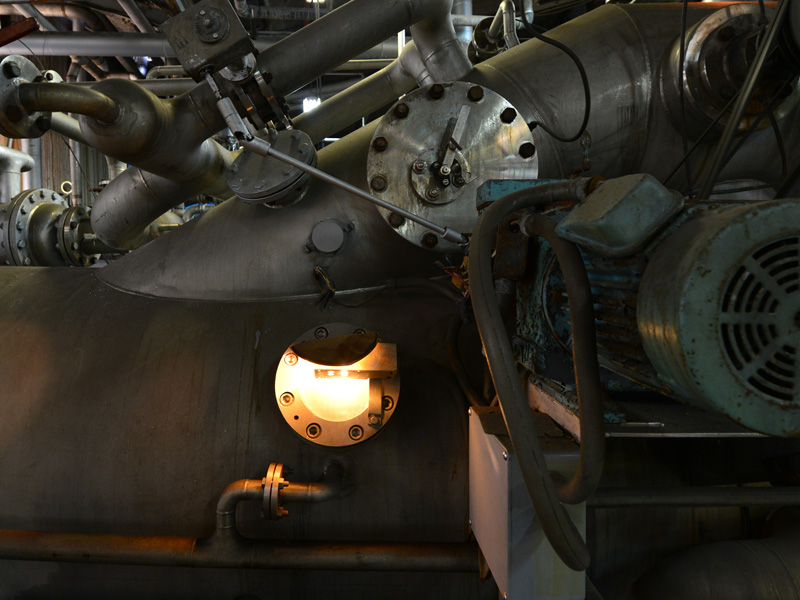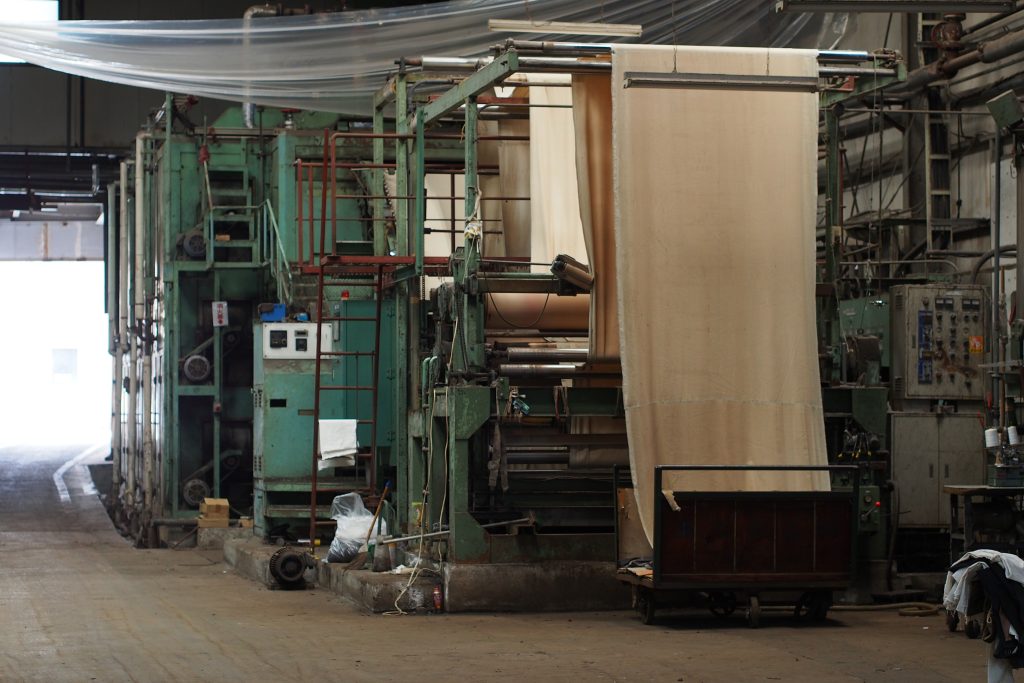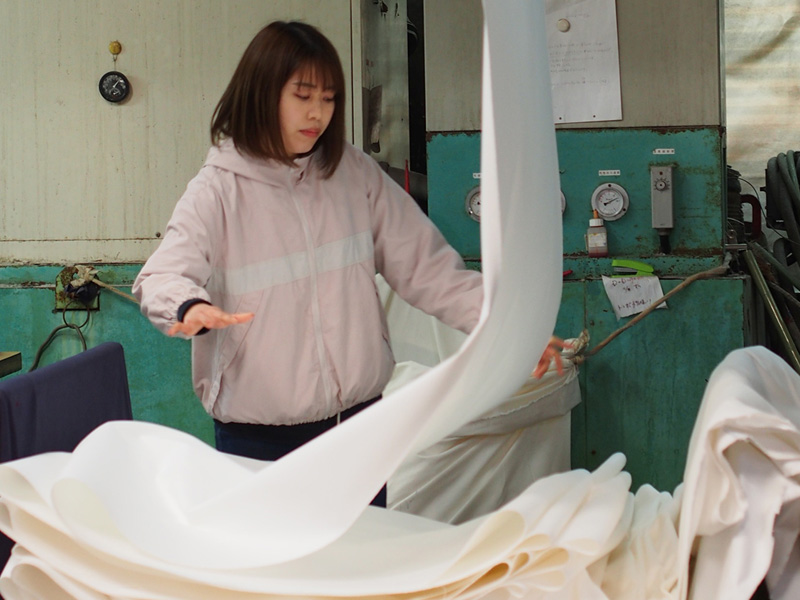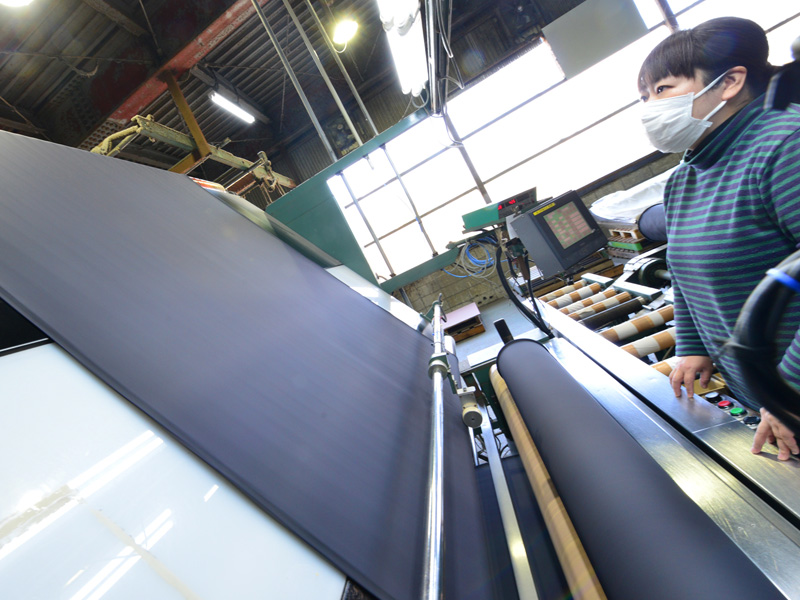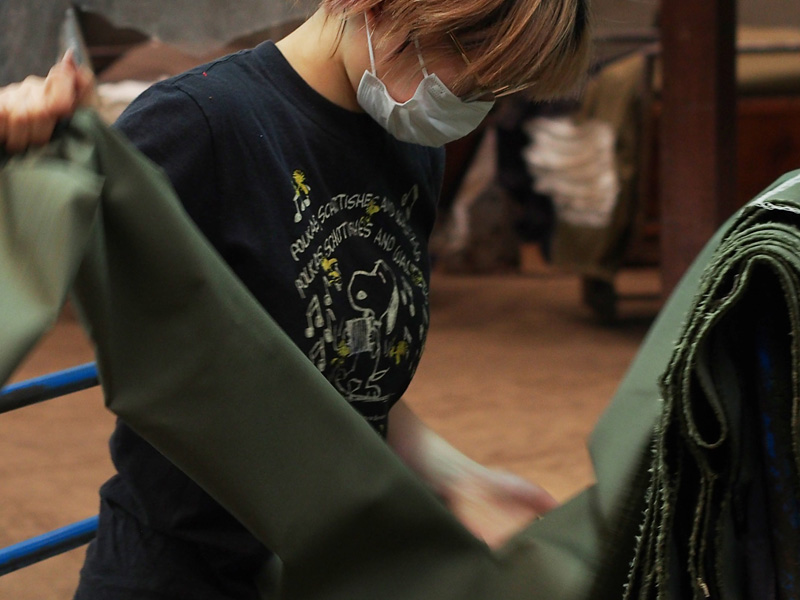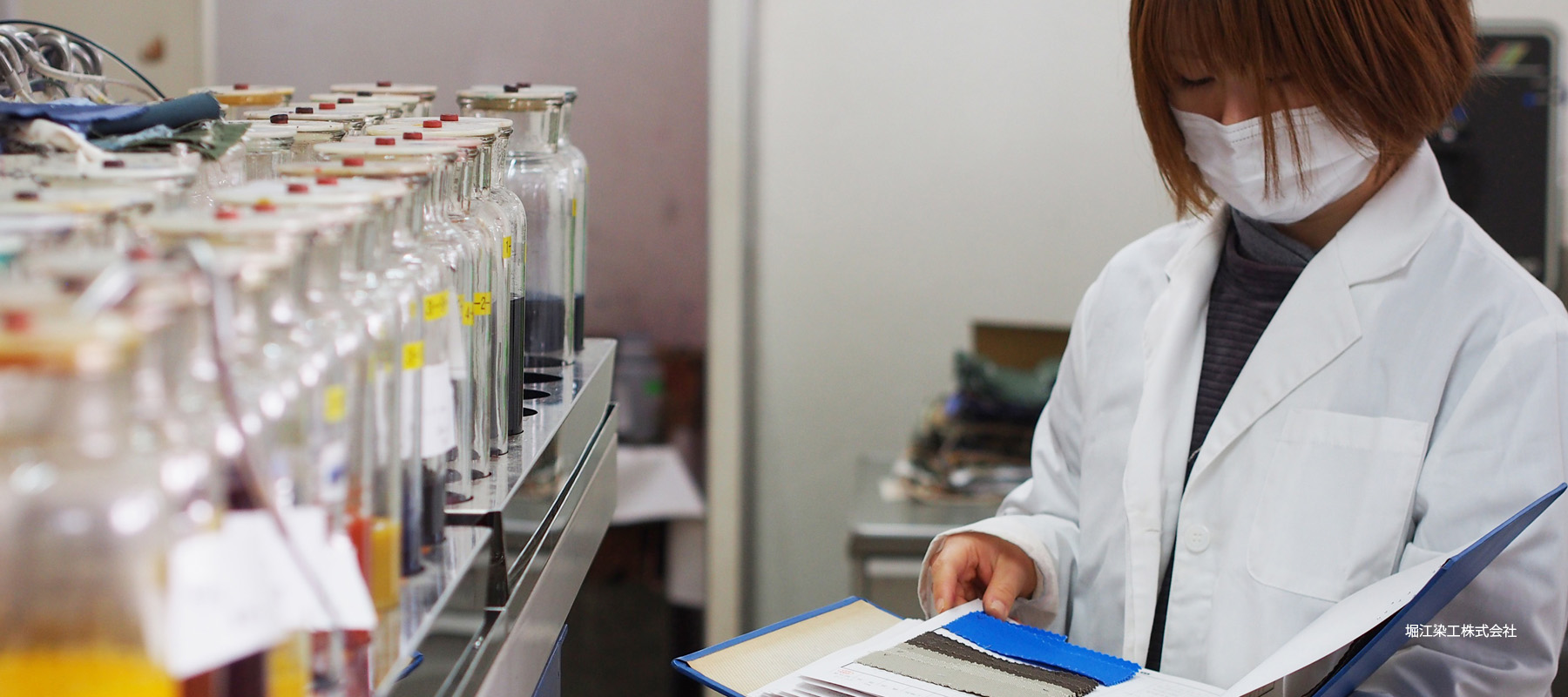
Member participating in “KURASHIKIZOME®”
HORIE SENKO Co.,Ltd.
A woman in her 20s is in charge of and operates a continuous dyeing machine over 30 meters long. She moved to Kojima, Kurashiki City, to work here after graduating from university. The factory in Kojima, Kurashiki City, where young women are the main workers, overturns the image of conventional dyeing factories. We interviewed President Shinohara of HORIE SENKO Co.

HORIE SENKO Co.,Ltd
CEO
Koichi Shinohara
Born in Kurashiki City, Okayama
Specializing in dyeing cotton fabrics for casual wear for 67 years
We have been specializing in dyeing medium-weight and thick cotton fabrics for casual wear for 67 years. There are three types of dyeing processes for clothing: “yarn dyeing,” which involves dyeing from the thread stage; “fabric dyeing,” which involves dyeing the fabric; and “product dyeing,” which involves dyeing the finished product.
The company name, HORIE SENKO, is often mistakenly thought to mean that the president’s last name is “Horie,” but Horie is the name of the place where the company was first founded (Horie district of Kojima). We moved from there to our current location. Since the time of the company’s founding, the company has operated as a factory for mass production during the long period of economic growth that included postwar reconstruction, rapid economic growth, and the bubble economy. We once handled large orders from a major trading company and once received an order from Uniqlo. However, after 2000, the apparel industry entered a recession and the volume of orders began to decline. Domestic production of apparel itself declined, and medium- and high-priced brands became small-lot production.
About 10 years ago, we were still dyeing fabrics about 1,000 to 1,500 meters long per color, but now most of our production is in small batches of about 500 meters per color. Although there is an up-charge for labor, there are also orders for dyeing at 200 meters per color. Orders are becoming smaller and smaller. If we are not careful, there are even orders for very small lots, such as 50 meters per color.
As the last remaining textile dyeing factory in Kojima
There used to be five dyeing factories in Kojima. However, since 2000, they have been going out of business, leaving only HORIE SENKO Co. Surprisingly, HORIE SENKO Co. is the last remaining antiresist dyeing factory in Kojima.
In the spring of 2023, SANYO SENKO Kojima Factory will close down, and we will accept some of its equipment and personnel. We hope that by passing on the technology, we will be able to help develop new dyeing and processing techniques again.
Most mass production orders are low-priced, and it is obvious that when we win those orders, we will be involved in excessive price competition. In addition, the cost of fuel and electricity has recently risen, making it even more difficult to cut costs. Horie Dyeing has no choice but to survive by responding to small-lot orders, which are increasingly requested, and by enhancing its technical capabilities.
We are grateful that our founder and predecessors have invested in equipment and facilities, and we have a variety of dyeing and processing machines, but every day we are trying to devise unique dyeing and processing methods while taking advantage of them.
Dyeing with sulfide dyes has long been practiced in this production area, but the number of places where it can be done has been decreasing because it is more time-consuming and difficult than reactive dyes. We are often called upon to help out when people are looking for a place to dye their fabrics. We also have a paraffin processing machine, which is rare in Japan. At one time, there were many requests for processing fabrics for bags, but recently the boom seems to have settled down and we receive only occasional orders. We hope to utilize the flexible ideas of the younger generation in product development that incorporates these traditional dyeing and processing techniques.
Most female students come to recruit new graduates
At its peak, the company had about 150 employees and workers, but now has a total of 16 employees, including administrative staff and factory floor workers. The dyeing factory floor is not a comfortable environment, with high temperatures and humidity in the summer. Until the previous generation, it was a “man’s workplace,” but for some reason, the number of young female factory staff has been increasing at HORIE SENKO Co.recently.
Eleven of the 16 staff members are women, and five of them are in their 20s. Perhaps because more and more young women want to be involved in manufacturing, we receive job applications from young women who love fashion. Some of our female staff members have moved not only from Kurashiki City and Kojima area, but also from neighboring prefectures such as Osaka and Kagawa.
In the future, it is unlikely that HORIE SENKO Co. will again become huge by taking on mass production orders from major brands, so we would like to become a craftsman-type dyeing and processing plant that can handle small-lot production. Fortunately, we have an increasing number of young female staff members who love fashion, and we would like to actively propose dyeing and processing methods that reflect new sensibilities.
I would like to create an enjoyable factory that is not merely a subcontractor, but a proposal- and craftsman-oriented factory where young staff can feel satisfaction from their work. To this end, we send young staff to KURASHIKIZOME® exhibitions in Tokyo to create opportunities to talk directly with customers. It may be a small thing, but I believe such experiences will lead to new developments.

